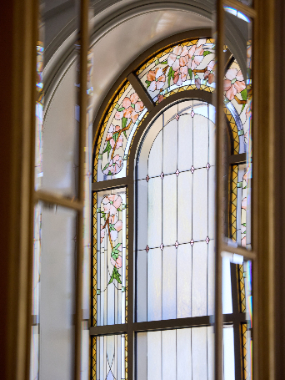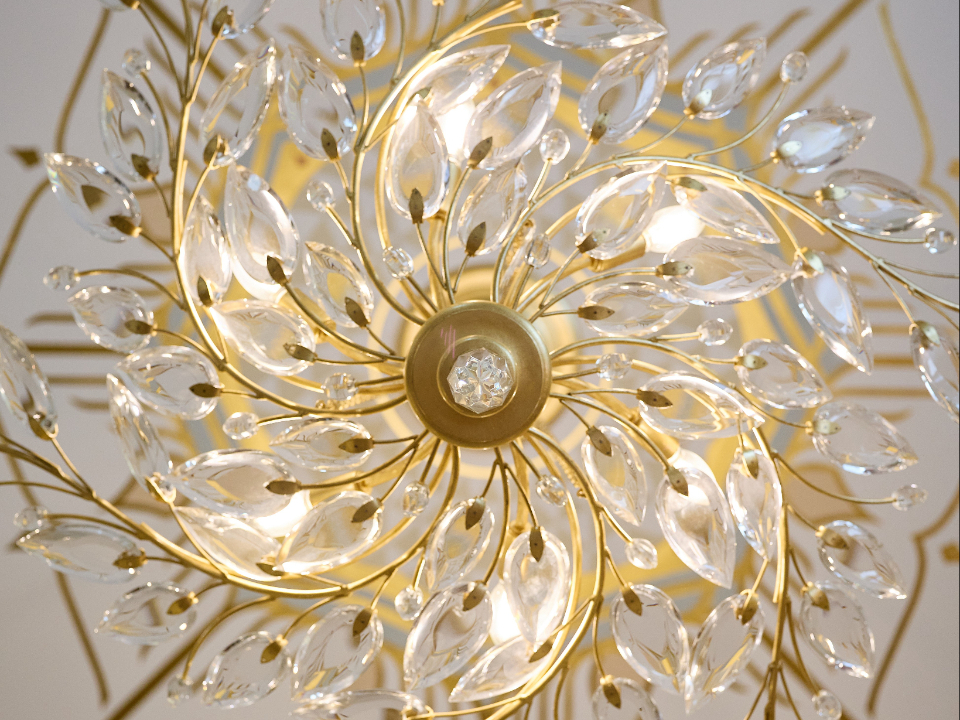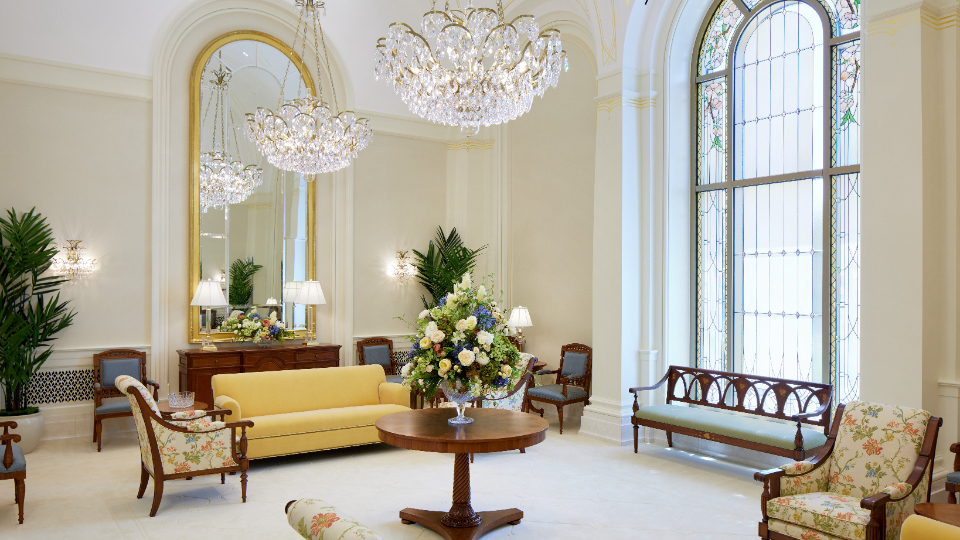The Church of Jesus Christ of Latter-day Saints’ connection to the land on which the Feather River California Temple sits in Yuba City goes back 50 years. It is a story rich in interfaith harmony and mutual respect.
In the early 1970s, Mehar Tumber and his family (devout Sikhs) owned the land and used it to grow peaches. Church leaders had struggled to find suitable property for a stake center, a building in which multiple congregations could meet. Tumber, a man of great faith, was not in the market to sell. But he changed his mind after Church representatives approached him about making a deal.
“He loved the idea,” said Raji Tumber, his daughter. “He came home that day when he said yes and said, ‘I’m so happy. We are so blessed to have the Church here as our neighbor, as our anchor. They’re going to anchor us and keep us. We’re going to be in a great relationship.’”
Downloadable B-roll & SOTs | Temple Fact Sheet PDF
-
- Feather-River-California-Temple-
- -Feather-River-California-Temple
- -Feather-River-California-Temple
- -Feather-River-California-Temple
- Feather-River-California-Temple-
- Feather-River-California-Temple
- Feather-River-California-Temple-
- Feather-River-California-Temple-
- Feather-River-California-Temple
- Feather-River-California-Temple-
- Feather-River-California-Temple
- Feather-River-California-Temple
- -Feather-River-California-Temple
- -Feather-River-California-Temple
- -Feather-River-California-Temple
| Temple Square is always beautiful in the springtime. Gardeners work to prepare the ground for General Conference. © 2012 Intellectual Reserve, Inc. All rights reserved. | 1 / 2 |
The relationship continues today. The Feather River Temple, which opens to the public this week, sits in the same space as the old stake center. That building was razed in 2020 (and many of its valuable materials were donated to other faiths) to make way for a house of the Lord — the most sacred space on earth.
“As one building was being torn down, all sorts of friendships were being built up,” said Steve Hammarstrom, president of the Yuba City California Stake. “All of those built friendships and all the donations that were made from tearing down our building have become all these friends who have been so supportive of this beautiful temple.”
Raji said the gold statue of Moroni (a Book of Mormon prophet) blowing his trumpet atop the temple — a symbol of the Church’s mission to preach Christ’s gospel to everyone — is a powerful image of the importance of faith and inclusiveness.
“We’ve had opportunities now with open houses, where the Sikh temple had a group from the [Latter-day Saint] community tour our temple. [The same thing was done with] the Hindu temple on Franklin Road. That’s never happened before,” Raji said. “This relationship just continues to grow and get better and more enriched and more thoughtful and inclusive of everybody. This is what this [angel Moroni] exemplifies. I am so thrilled and happy beyond words. I hope I can do it justice to let people know that our community is blessed that this [temple is here].”
Virgil Atkinson, a Latter-day Saint who serves on the Yuba-Sutter Community Task Force, said Yuba’s diverse community is powerful.
“There’s so much [diversity] in this community — and it’s not just a little bit here and a little bit there,” Atkinson said. “To see the strength that each religion has and the love that they have for their God, I just love being a part of that and feeling it and worshiping with them. … I plan on walking through the temple with hundreds if not thousands of people from our community who love and respect us and want to come to the temple.”
Media Day in Yuba City
Journalists and photographers gathered at the meetinghouse next to the Feather River California Temple in Yuba City, California, for a news conference on Tuesday, August 15, 2023.
Downloadable B-roll & SOTs
-
- Feather-River-Temple-Media-Day
- Feather-River-Temple-Media-Day
- Feather-River-Temple-Media-Day
- Feather-River-Temple-Media-Day-
- Feather-River-Temple-Media-Day
- Feather-River-Temple-Media-Day
- Feather-River-Temple-Media-Day
- Feather-River-Temple-Media-Day
| Temple Square is always beautiful in the springtime. Gardeners work to prepare the ground for General Conference. © 2012 Intellectual Reserve, Inc. All rights reserved. | 1 / 2 |
“I am honored to extend congratulations and best wishes of the county of Sutter to The Church of Jesus Christ of Latter-day Saints,” Karm Bains of the Sutter County Board of Supervisors told the reporters and photographers who attended the media event.
Church and local government leaders participated in the media briefing before taking a tour of the temple.
“We have been touched by the outpouring of other faiths in support of the construction of this beautiful house of the Lord,” said Elder Mark A. Bragg, a General Authority Seventy and president of the North America West Area. “Right away you feel a spirituality in this part of the Lord's vineyard.”
Yuba City Mayor Wade Kirchner has been supportive of the new temple. “When I first heard that Yuba City was selected for The Church of Jesus Christ of Latter-day Saints, I was excited, but I wasn't surprised when many of you know or know now that our community is very accepting, diverse and welcome.”
Elder Adilson de Paula Parrella, assistant executive director of the Temple Department, has felt a warm welcome from the Yuba City community.
“You see religious freedom here. You see religious inclusion. You see people just being inviting and welcoming the Church and the temple,” said Elder Parrella.
“It is the house of the Lord, and you truly feel that when you leave and while you're there,” added Bains, who is Sikh. "It has been an amazing experience and I truly feel blessed to have had this opportunity.”
Elder Jonathan S. Schmitt, a General Authority Seventy, said the Feather River temple is perfectly situated in the downtown area of Yuba City.
“This house of the Lord will be a tremendous blessing not only to the Saints, but to the community at large,” remarked Elder Schmitt.
“Many of the issues that I see being addressed at the state legislature stem from broken families, the lack of faith,” said Rosilicie Ochoa Bogh, a local Latter-day Saint and a state senator in California Senate District 23.
“This is a tremendous moment not only for us, but for Northern California as we build our faith in our community,” said Ochoa Bogh.
“Everything that happens in the house of the Lord is to point us to Christ to make us … higher and holier representatives and disciples of Christ. It changes us from the inside out,” concluded Elder Bragg.
The public is invited to tour the temple from Saturday, August 19, through Saturday, September 9, 2023, except Sundays. The temple will be dedicated on Sunday, October 8, 2023, in two sessions.
The 41,655-square-foot structure is located at 1470 Butte House Road in Yuba City. A new adjacent meetinghouse and distribution center will meet the needs of Latter-day Saints throughout the area.
Including Feather River, there are 12 temples in California, the most of any state besides Utah. Temples operate in Fresno, Los Angeles, Newport Beach, Oakland, Redlands, Sacramento and San Diego. Temples in Bakersfield, Modesto and San Jose have been announced, and one in Yorba Linda is currently under construction.
These temples serve nearly 730,000 Latter-day Saints in California in over 1,130 congregations.

b0e8d574094011eeb30deeeeac1e36ca4753164d.jpeg
Stained glass window in the Feather River Temple in Yuba City, California.2023 by Intellectual Reserve, Inc. All rights reserved.The Temple Exterior
The Feather River Temple is built of structural steel and precast concrete panels. The exterior art glass’s main design motif is the regionally significant almond blossom.
The landscaping is inspired by the Mediterranean climate of the Sacramento Valley and the area’s rich history and biodiversity. The design incorporates several mature native oak, redwood and hackberry trees that were already on-site. Some prominent features are the 100-year-old olive trees transplanted from a local orchard, which are arranged in groves in front of and behind the temple. The grounds are enclosed with a six-foot-tall steel picket fence, powder-coated with a bronze color to match other metal fixtures on the site. Precast concrete pillars are located at the gated entrances to the grounds.
What’s Inside
The ceremonies within each temple teach the purpose of life and unite families, past and present. The mere presence of temples in communities around the globe reminds Latter-day Saints of the importance of faith in the common Father of all humanity, the need for constant improvement of the soul, the possibility of family relationships that reach beyond the grave, and the salvation that comes through the grace of Jesus Christ and obedience to His commandments.
The beauty of the ceremonies is matched by the grandeur of the interior. The temple’s green carpet represents the area’s rice fields and farming community. The rug designs are reminiscent of an open field of local wildflowers and the California poppy, the state flower. The stone floor consists of Crema Beige (Iran), Emperador Light (Turkey), Inca Gold (Pakistan), Verde Lichen (Iran), Rojo Alicante (Spain) and Vanilla (Turkey) marble. Colors were chosen to correspond with the fabrics and represent the local flora.

b501e027094011eeb0edeeeeac1ee2ade739ed9b.jpeg
A crystal chandelier hangs from the ceiling in the Feather River Temple in Yuba City, California.2023 by Intellectual Reserve, Inc. All rights reserved.Decorative paint is used in a simple fashion along the patron path. In the ordinance areas, the decorative paint is an abstraction of the local flora and its underlying geometry. It is used to accentuate the architecture at key points and connections, signifying the natural beauty of the local area and the principles that contribute to that beauty.
Art glass is in all the temple windows. The arched windows of the second level and ordinance spaces depict the almond blossom, representing the area’s agricultural industry. This is a celebration of beauty and the rewards of hard work. The natural colors of the almond blossom are used against a backdrop of yellow fading to blue.
The baptismal font railing is an abstraction of tall reeds that grow at the edges of bodies of water. It also draws on the shape of the rice plant grown extensively in the area.
The temple’s doors are made of cherry wood, cherries being a significant agricultural product of the region. The door hardware is brass. The hardware design uses arches as well as a reed-and-ribbon motif. The design also features abstract forms of flora.

9c2f0c35094011ee8992eeeeac1ee9ea6c7d1aec.jpeg
Celestial room in the Feather River Temple in Yuba City, California.2023 by Intellectual Reserve, Inc. All rights reserved.“I am completely, completely overwhelmed with the beauty of the temple [and] all the thought that went into where the paintings are placed and the depictions in the paintings,” Raji said. “The depictions remind me so much of being right here out by the mountains, the buttes or in the valley area with rolling hills and greenery. The colors are vibrant. It’s all natural earth colors, greens and blues and beautiful, beautiful shades.”
Raji described the Feather River Temple as “a forever building,” a place that radiates faith. She said she felt her father was present as she walked through the temple and that he is surely “smiling big and so happy” that this holy structure is part of the community.
“The celestial room was so emotional for me because I feel my father is there witnessing this, enjoying this feeling, this blessed room where people come and feel what it’s going to be like in eternity,” she said.
Visit FeatherRiverTemple.org for more information about the open house.